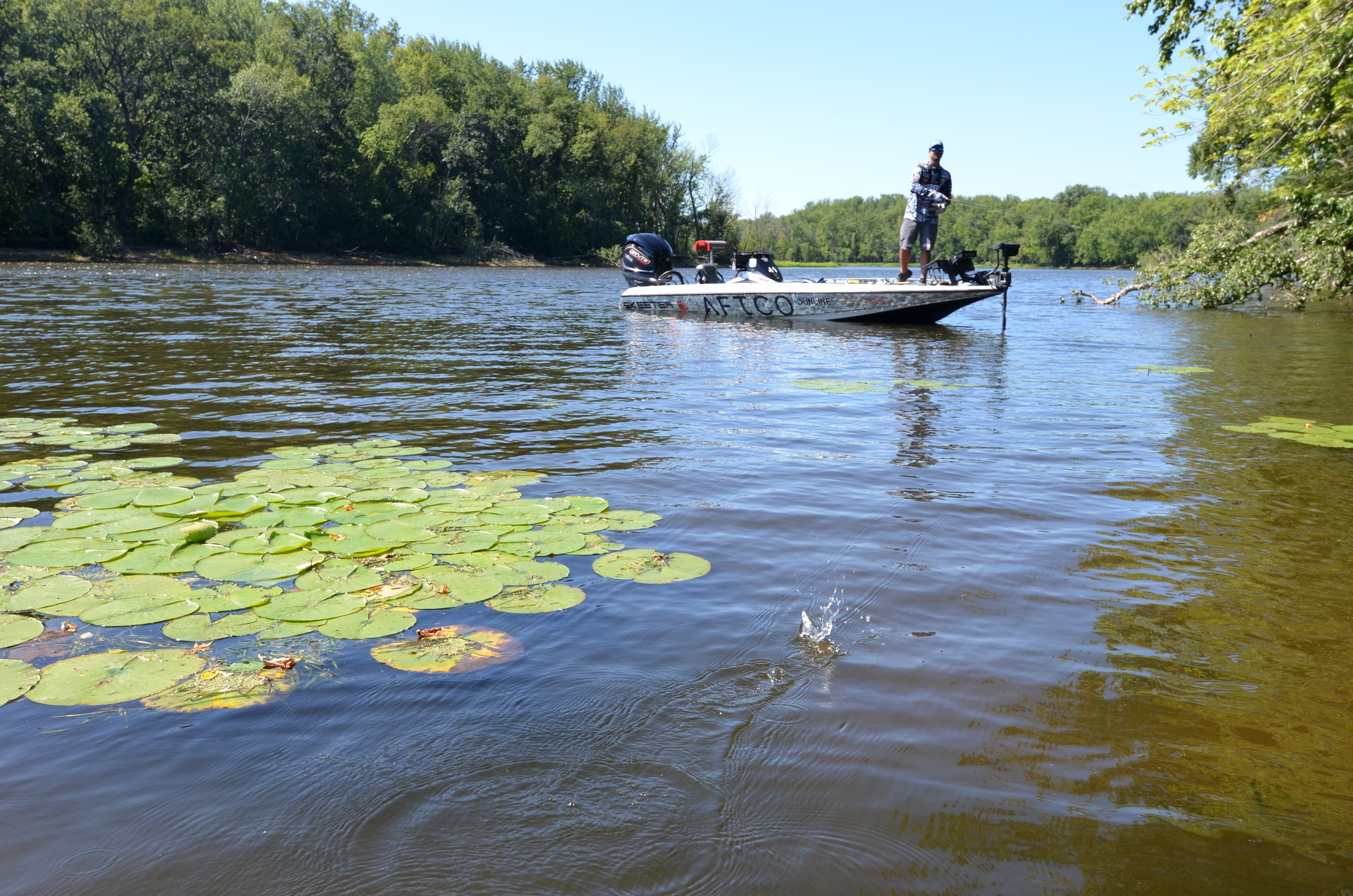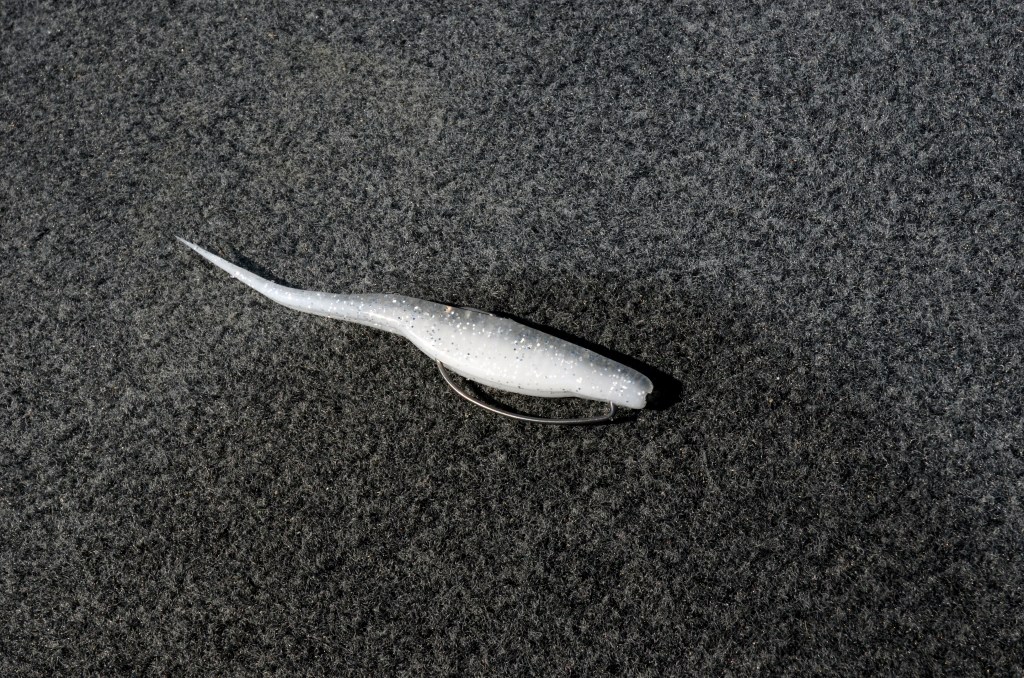
Florida Bassmaster Elite Series pro Drew Cook fishes a Big Bite Baits 5-inch soft jerkbait with spinning and casting tackle. Spinning tackle allows him to make longer casts in open water and for schooling bass. In these situations he works a pearl flake jerkbait with a very fast, aggressive retrieve on the surface.
For prespawn and spawning bass in shallow water, he switches to casting tackle with heavier line and makes shorter, more accurate casts. He also opts for a bluegill color stickbait. He works it more slowly and also lets it sink vertically.
Cook relies on two setups when fishing the stickbait with spinning tackle. One is Texas rigged with a 4/0 Gamakatsu G-Finesse Hybrid Worm Hook. The other is nose-hooked with a 1/0 Gamakatsu Drop/Split Shot Hook. His spinning reel is spooled with 12-pound Sunline SX1 braid. He goes with an 8- to 12-pound Sunline Sniper fluorocarbon leader with the Texas rig and an 8-pound leader with the nose-hooked option.
“Nose-hooking gives the bait a freer action,” Cook said. “It wiggles more than it jerks from side to side. I use it a lot for smallmouth and spotted bass.”
Clear water
Cook has sacked bass with a nose-hooked stickbait from many clear bass waters, including Lake Hartwell, Lake Lanier, Lake Norman, Lake of the Ozarks and the St. Lawrence River. He recalled an especially productive day on Lake of the Ozarks where his nose-hooked jerkbait called up bass that were suspended 45 feet deep in the tops of trees rooted in 85 feet of water.
“I was working the hell out of it,” Cook said. “They normally don’t miss the bait when they come up that far. It’s just like throwing a topwater over brush piles. Sometimes they don’t want that topwater bait, but they’ll take a subtle stickbait.”
Fast and furious
During the first day of the 2022 Elite Series tournament on the St. Lawrence River, Cook smashed the smallmouth by twitching a nose-hooked jerkbait over a shallow sand flat.
“There were wolf packs of them,” Cook said. “I was working the bait as fast as I could. You can’t take a bait away from a bass if he wants it. I caught 19 1/2 pounds and had a blast, but I had to rethink what I was doing when I got to the weigh-in. I was way back in 66th place.”
Because a nose-hooked jerkbait is weight-forward, it sinks nose down and stays in the water with a hot retrieve more than a Texas-rigged version does, Cook pointed out. A Texas-rigged jerkbait sinks horizontally, which makes it skip wildly over the surface when you twitch it at a fast pace.
However, a choppy surface tosses a nose-hooked jerkbait out of the water, making it less effective. In this instance, the Texas rig stays in the water better. The heavier Texas rig also allows for longer casts, which helps Cook reach bass farther out. Longer casts are often necessary when pressured bass become boat shy, Cook added.
“If I want the Texas-rigged bait skipping out of the water, I twitch it with my rod tip up,” Cook said. “If I want the bait in the water with more of a side to side action, I keep the rod tip down.”
Heavy hitter
For prespawn and spawning bass relating to cover in the shallows, Cook casts a Texas-rigged soft jerkbait with casting tackle matched with 16-pound Sunline Sniper. The emphasis in this situation is making accurate casts with tackle strong enough to put the hurt on heavyweight bass. His presentation is the polar opposite of the fast-and-furious retrieves he employs in clear, open water with spinning tackle.

“It’s more of a twitch-twitch and let it fall in there,” Cook said. “The bait kind of falls like a Senko. If you watch bream, a lot of times they dart fast and then stop dead still and sit there. That’s pretty much what I’m trying to imitate. A bluegill going and stopping and sinking down to get the eggs off the bed.”
Any cover that attracts bass in springtime is a viable target for Cook’s soft jerkbait. That includes wood, dock posts and sandy holes in grass. A bream-colored soft jerkbait helped him claim sixth place at the 2022 Elite Series event on Florida’s St. Johns River. He cast it to isolated wood, pads and young lily pads that had not grown all the way to the surface.





